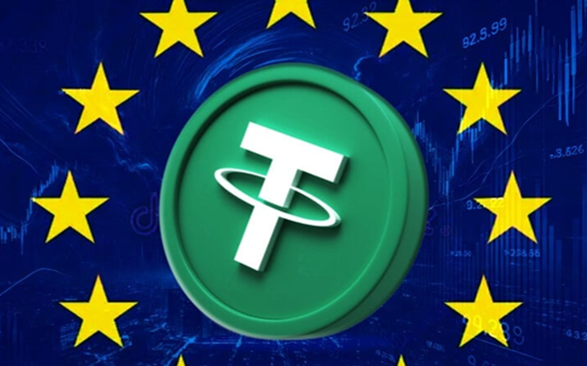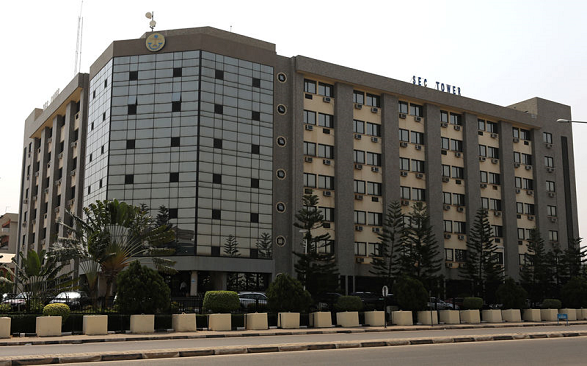by Jude Ayua and Senator Ihenyen
The European Union (EU)’s Markets in Crypto Assets (MiCA) Regulation entered into force on 30 December 2024. MiCA is the first European regulation governing the cryptocurrency market. It establishes clear rules for the issuance and management of crypto assets, including stablecoins, requiring issuers to obtain licenses and adhere to standards of organization and governance.
Stablecoin Classification in Europe: Asset-referenced tokens and electronic money tokens
MiCA classifies stablecoins into two main types: asset-referenced tokens and electronic money tokens.
Asset-referenced tokens are assets that maintain a stable value by referencing one or more currencies, assets, or rights, excluding “e-money tokens.”
Electronic money tokens (e-money tokens) are assets that maintain a stable value by referencing a single official currency. They include “algorithmic stablecoins” which use protocols to adjust supply based on demand to maintain stability relative to a currency or assets.
MiCA requires stablecoin issuers to publish a white paper about their projects and also maintain sufficient reserves to back their assets.
Generally, the regulation introduces consumer protection measures, such as transparency in advertising and mandatory customer service offerings. Although MiCA aims to establish and maintain order and supervision over the European crypto assets market, it does not cover all crypto assets such as nonfungible tokens (NFTs).
The European Securities and Markets Authority (ESMA), the EU’s financial markets regulator and supervisor, published the final reports on MiCA on 17 December 2024. The publication contained regulatory technical standards and guidelines ahead of the full entry into application of the MiCA. Verena Ross, ESMA Chair, noted in the publication:
The entry into force of the MiCA regime from 30 December 2024 marks a significant step towards having a regulatory framework for the crypto market in place. Nevertheless, it is crucial to recognise that the new regime would not suffice to eliminate the inherent uncertainty and volatility in the crypto-assets market, and investors should fully understand the risks before engaging in this space.
Ross added that during the transitional period, ESMA will continue to provide guidance and work with all NCAs to ensure the smooth implementation of MiCA and to support a level playing field through supervisory convergence actions. The priority for ESMA will be to continue the collaboration with national competent authorities during the transitional period and to ensure that MiCA’s provisions are fully implemented and evolve in line with the changing landscape of the crypto-asset market.
Read also: Tether (USDT) Stablecoin: Use Cases and Pros and Cons You Should Know.
Impact on USDT in the European Market
MiCA’s entry into force means restrictions on stablecoins that do not comply with the requirements of its regulation. Currently, the “restricted assets” include Tether (USDT), Pax Dollar (PAX), PayPal USD (PYUSD), Gemini Dollar (GUSD), GMO Trust’s GYEN, and DAI by MakerDAO protocol.
As of 31 December 2024, Tether’s global market capitalization is approximately $137.6 billion. Of the $199.94B of the stablecoins market cap, USDT is 68.82 percent of the global stablecoin market.
As the largest stablecoin by market capitalization, USDT’s current status in the European market raises uncertainties about its compliance with MiCA’s standards. Although designed to stabilize and legitimize the crypto market, USDT currently falls short of MiCA’s operational guidelines for stablecoins issuers. These guidelines include being transparent about their reserves and ensuring sufficient liquidity to back their tokens.
Juan Ignacio Ibañez, a member of the MiCA Crypto Alliance’s Technical Committee, noted the uncertainty about USDT’s MiCA compliance: “No regulators have explicitly stated that USDT is non-compliant, but that does not mean it is compliant.” Although MiCA includes a transitional phase to ensure compliance across the European market with a grace period until July 2026, Ibañez warned that “waiting without acting could prove risky in the long term,” and emphasized that it is vital to take proactive measures.
Unlike its major competitor, Circle, which became MiCA-compliant earlier in 2024, Tether is yet to get USDT compliant with MiCA. While specific data on Europe’s share of USDT’s market cap is limited, the region represents a substantial portion of global cryptocurrency operations. The potential exclusion of USDT from European markets could significantly impact its overall trading volume and liquidity.
Read also: Coinbase delists multiple stablecoins in EU markets.
Global impact, implications for the U.S. market, and the future of USDT
USDT’s exit from the European market could also impact it globally in various ways.
First, global exchanges in other regional markets may prioritize listing and transacting with MiCA-compliant stablecoins like the USD Coin (USDC). This could reduce USDT’s presence on platforms with significant European exposure and indirectly push users globally to switch to alternative stablecoins. In October, Coinbase announced its decision to delist USDT in Europe along other stablecoins that are not MiCA-compliant. There is also a likelihood for exchanges outside Europe to adopt MiCA-compliant standards to maintain access to European customers, thereby pressuring Tether to adapt or risk losing market share globally.
Second, although MiCA directly applies only to European jurisdictions, its influence could extend to the U.S. market. Stablecoins like USDT are still subject to evolving regulations, such as the potential legislation in the U.S., Stablecoin TRUST Act. Such U.S. regulations may align with MiCA’s transparency and reserve requirements, or be at least similar to it. If global exchanges operating in both regions adopt MiCA-compliant stablecoins like USDC to ensure uniform compliance, USDT could gradually face declining preference among U.S. users as well.
Tether’s position and prospects for USDT
As of 30 December 2024 when MiCA entered into force, Tether is yet to issue a public statement regarding its compliance with the regulations. However, Tether CEO Paolo Ardoino has strongly criticized the regulation in a post on X.
“MiCA is nothing but a massive gift to the traditional banking system. Forcing stablecoin issuers to hold >30% of their liquidity in banks only ensures more profits for the legacy players. It’s regulation designed to benefit the old system, not innovation,” Ardoino said. He further criticized the EU Commission, European Parliament, and the “whole EU” for showing it is only “best at zero innovation, endless useless regulations.”
Read also: Remote and Stripe partner to facilitate stablecoin settlements for contract workers.
Notwithstanding, Tether has shown its awareness of the regulation and willingness to comply with its requirements. To ensure compliance, the company announced the discontinuation of its euro-pegged stablecoin, EURT, giving customers EURT-holder a chance to redeem their holdings by 27 November 2025.
Possible business case for Tether’s decision on USDT in the European market
Interestingly, in what seems like a strategic move by Tether in the European market, Tether has invested in European stablecoin company StablR, issuer of euro and U.S. dollar stablecoins EURR and USDR. StablR obtained an electronic money institution (EMI) license in Malta in July 2024, making it compliant with EU regulations including MiCA. Ardoino commented on Tether’s decision in a report:
The European stablecoin market is at a turning point, with regulation finally catching up to innovation. The company sees the evolving regulatory landscape as a positive step forward but is concerned about the systemic risks it introduces, particularly within the already vulnerable European banking sector.
So, while the main reason for Tether’s position on MiCA is the reserve requirement, the company’s position may have also been informed by other considerations as follows. Particularly from a strategic point of view, based on publicly available information and speculation, here are possible reasons why Tether might have decided not to comply with MiCA’s stablecoin regulations:
- Global Market Access: USDT is a widely used stablecoin with a significant global market presence. By not complying with MiCA, Tether may be attempting to maintain access to markets that are not subject to MiCA’s regulations, potentially preserving its global market share.
- Operational Flexibility: Non-compliance with MiCA might allow Tether to maintain greater operational flexibility, enabling the company to respond quickly to changing market conditions and innovate without being encumbered by regulatory requirements.
- Regulatory Arbitrage: By not complying with MiCA, Tether may be seeking to avoid the regulatory costs and burdens associated with compliance. This could provide a competitive advantage over other stablecoin issuers that do comply with MiCA. Besides, considering Tether’s relatively lean business model, compliance with MiCA’s regulations could be costly for Tether, requiring significant investments in infrastructure, personnel, and processes. By not complying, Tether may be able to avoid these costs and allocate resources more efficiently.
- Fast-growing Stablecoin Adoption in Emerging Markets: Stablecoins, commonly USDT, are enjoying fast-growing adoption in emerging markets, offering Tether some leverage. According to a September 2024 report, Stablecoins: The Emerging Markets Story, stablecoins are still overwhelmingly linked to the US dollar. The Euro, the second most popular currency referenced by stablecoins, only had a transaction value of $617 million or 0.38 percent of the overall stablecoin market by June 2024. Each of the other stablecoins pegged to the Lira, the Singapore Dollar, the Yen, and several other fiat currencies, have less than $100 million in transaction value, amounting to 0.04% of the stablecoin market. Meanwhile, according to that report, the most active countries by stablecoin usage were Nigeria, India, Indonesia, Turkey, and Brazil: “Stablecoin share of portfolios, Nigeria was a standout again (by a significant margin), followed by India, Turkey, Brazil, and Indonesia.” Tether, however, needs to be proactive about how it could shape stablecoin policies and regulations in these emerging markets.
- Liquidity Edge in Decentralized Finance Ecosystems: MiCA has limited application in the decentralized finance (DeFi) space. USDT is currently no.1 in providing liquidity on many DeFi platforms globally, giving Tether a significant competitive edge in the stablecoin market, partly accounting for its almost 3/4th stablecoin market share.
Stablecoins for stable markets: Why regulators should put market stability first
Risks and Challenges
Without clear plans for compliance, Tether risks losing market relevance in jurisdictions MiCA applies to. As a widely used stablecoin, disruptions to USDT in the EU market could accelerate a shift toward alternatives like USDC, which are compliant with MiCA’s requirements. Between 30 and 31 December 2024, USDT’s market cap decreased by -0.74 percent and USDC increased by +0.44 percent.
While there may be potential benefits to Tether’s decision not to comply with MiCA, there are also significant risks and challenges to consider:
1. Regulatory Risks: Non-compliance with MiCA may lead to regulatory actions, fines, or even bans on USDT in the EU.
2. Reputational Risks: Tether’s decision may damage its reputation among investors, regulators, and the broader community, potentially impacting the adoption and usage of USDT, especially with traditional players and institutional investors.
3. Market Access Risks: Non-compliance with MiCA may limit USDT’s access to EU markets or make it more difficult for EU-based investors to access USDT.
4. Competitive Risks: Other stablecoin issuers that comply with MiCA may gain a competitive advantage over Tether, potentially eroding USDT’s market share.
If Tether addresses MiCA’s requirements of enhanced reserve transparency, its USDT stablecoin could regain its status in the EU market and boost its global relevance. The company may need to review its reserve policy and increase reliance on cash or liquid assets to comply with MiCA. However, if Tether maintains its decision to exit USDT from Europe and invest in other MiCA-compliant stablecoins like EURR and USDR, it will remain relevant as a company and retain its EU presence as an investor.
Read also: Stablecoins gain traction, threatening bitcoin’s dominance
Conclusion
USDT’s impending noncompliance with MiCA requirements marks is also critical for the global stablecoin market. While the immediate impact for the stablecoin is still in Europe, the regulatory shift may potentially shape global stablecoin preferences. The global stablecoin market is facing major transformations, with regulatory compliance emerging as decisive factors for future adoption.
Tether’s decision not to comply with MiCA’s stablecoin regulations is a complex and multifaceted issue. While there may be potential benefits to this approach, such as regulatory arbitrage, global market access, operational flexibility, and cost savings, there are also significant risks and challenges to consider.
Ultimately, the success of Tether’s strategy will depend on various factors, including the company’s ability to navigate regulatory complexities, maintain market access, and mitigate reputational risks. As the regulatory landscape continues to evolve, it is essential for Tether and other market participants to stay informed and adapt to changing requirements.
Read also: Introduction to Stablecoins: USDT, USDC, and BUSD
Jude Ayua is a policy analyst at CAB. A lawyer, Jude is an associate at Infusion Lawyers where he is a member of the Blockchain & Virtual Assets Group. He is also a member of the Policy & Regulations Committee of the Stakeholders in Blockchain Technology Association of Nigeria (SiBAN). Jude reports and writes on crypto policy and regulations. jude@infusionlawyers.com
Senator Ihenyen is the Lead Partner at Infusion Lawyers where he heads the Blockchain & Virtual Asset Practice. He is the immediate former President of SiBAN and former General Secretary of Blockchain Industry Coordinating Committee of Nigeria (BICCoN). Senator is the Founding Editor of CAB and Advisory Board member, Lagos Blockchain Week. He is a Trustee and Executive Chair of the Steering Committee of the Virtual Asset Service Providers Association (VASPA), an Africa-focused group for VASPs.
Discover more from Crypto Asset Buyer
Subscribe to get the latest posts sent to your email.




